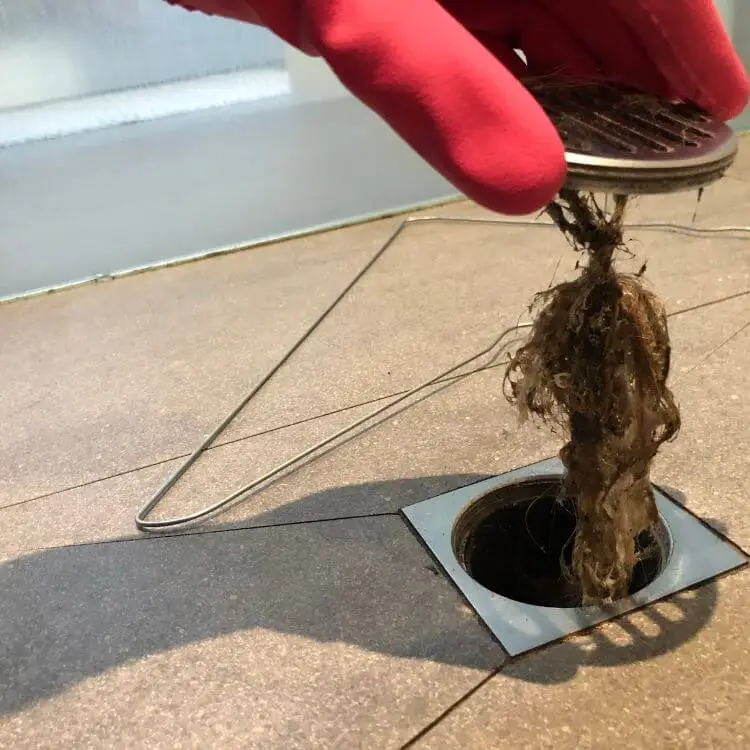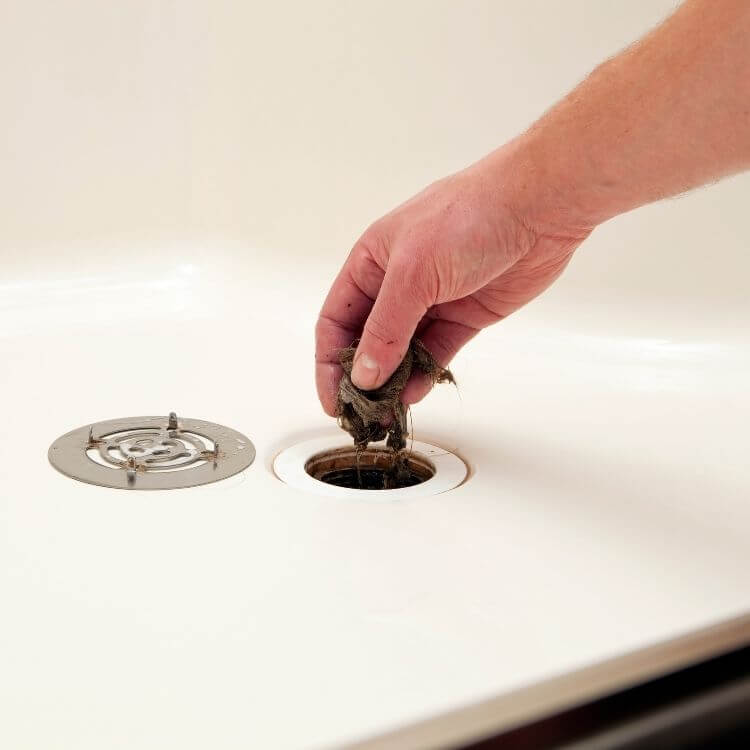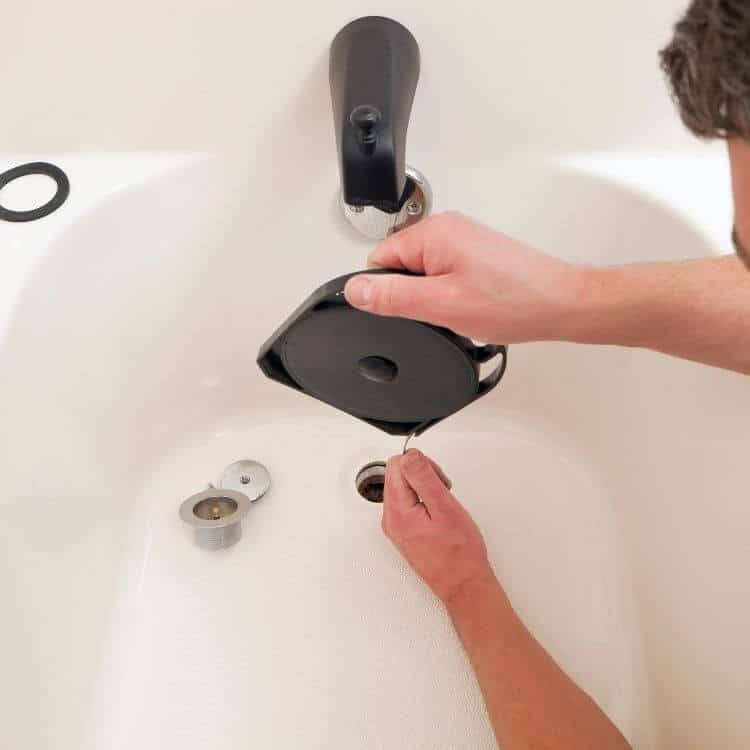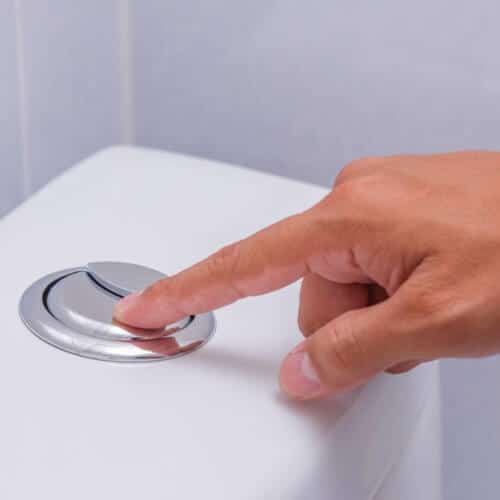The good functioning of your plumbing system is not guaranteed unless you maintain it carefully. Even a new home requires the inspection of plumbing facilities after a year or two. Many people choose to neglect their plumbing, due to lack of time or carelessness. However, this can lead to questions such as “Why is dirt coming up the shower drain?”
Dealing with issues like dirt coming up shower drain indicates serious plumbing issues. You may need to call a plumber to deal with it. Until you call a professional to check your drains, you can do some research online and be prepared.
What is dirt coming up shower drain?

Before finding out why dirt is coming up the shower drain, let’s see what that dirt is.
That dirty water, whether it is black, brown, or grey, is wastewater. In other words, this is water that has been previously used and not treated.
All your plumbing appliances, such as toilet, sink, and shower all feed into the sewer line. When there is a problem with the septic system or your drain, water can back up to your drains. Needless to say, this causes serious sanitation issues and needs to be solved immediately.
Bathrooms are high-traffic areas in most homes. We depend on plumbing for a comfortable and healthy life. Nobody wants a bathroom out of service as this causes a huge disruption in their daily routine.
Warning signs of a clogged drain
There are multiple signs that indicate your drain is clogged or has an issue. A drain, however, rarely clogs immediately and there are many worrying signs before dirt coming up shower drain:
- Water drains slowly
Water does not drain as fast as it should after taking a bath or a shower? This is not an emergency yet, but best is to take action. A drain that is slow indicates a partial clog, which can only become worse in time.
- Bubbling toilet water
Your toilet gurgles? This strange phenomenon has a simple explanation: negative air pressure or suction is building up the drain line. This is not a good sign. [1]
In a functional drain, air flows freely through the lines, so waste runs smoothly down and out. Gurgling suggests abnormal suction in the line caused by a clog. The negative air pressure eventually releases and pushes air backwards through the drainpipe and into the toilet bowl. As a result, the toilet can even flush itself!
A gurgling toilet indicates a problem either in the drain system, or in the vent stack. In the second situation, the pipe that allows sewer gases to escape through the roof could be obstructed.
If you ignore a gurgling toilet, the problem can become worse and eventually cause wastewater backing up in toilet.
- Sewage smell from drains
Sewage usually smells like rotten eggs, but you won’t feel that smell if drains work properly. Sewer gas contains methane, which is odorless, but also hydrogen sulfide, which smells like rotten eggs.
This bad smelling gas results from the breakdown of organic matter, which also produces ammonia and carbon oxide. All these gases are toxic to humans if they are present in large quantities.
- Water appearing in tub or shower when you flush or use the washing machine
The toilet and the washing machine produce quite lots of wastewater. If the drain is clogged, all that wastewater has nowhere to go and will back up in other drains nearby.
What causes a clogged shower drain?

Why is my shower drain backing up? Why is there dirt coming out of shower drain?
The obvious answer is – due to being clogged.
And shower drains are particularly prone to clogging.
Yet, what causes clogs in shower drains? Here are the main culprits for a shower drain that does not work properly:
- Hair
You wash your hair in the shower, right? Then some of the hair ends down the drain. Even if you manually extract the hair caught in the drain cover, some of it may still escape.
Hair is so bad for drains because it doesn’t break down in water. It can adhere to pipe dents and form a net that catches other particles. The result is a stubborn clog that looks and smells appalling.
- Soap
Soap scum is a common clogging factor in shower drains. You obviously can’t avoid it because we need soap for washing our bodies.
In time, soap scum coats drain walls and even attaches to hair clogs making them worse. Rough spots form, narrowing the diameter of pipes and restricting water flow. Soap scum tends to turn into a solid matter, which makes it difficult to remove.
- Hard water
Hard water contains minerals such as calcium and iron. They can corrode pipes while also adhering to the sides of the drain. When combined with soap scum, hard water becomes even a bigger problem.
- Foreign objects
The most inoffensive small objects, like pieces of product wrappers, can enter a drain and clog it.
How to clear a clogged shower drain

You have leaves coming up the shower drain? Or – what a nightmare – you have poop coming up through bathtub? Whatever the underlying problem is, you need to clean that dirt and the drain.
Here are the main steps you need to take:
- Video inspection
This service is usually available through a professional plumber. Best is to try it, because it will enable you the determine the exact cause of the problem. A video inspection is also useful because it offers information on the condition of your pipes. You will find out how much they have deteriorated and corroded over time. Plumbing cameras are very effective at determining how serious a plumbing issue is. [2]
- Hydro jetting
A hydro jetting session could be recommended after a video inspection. This method effectively drains your clogged plumbing system and eliminates buildup. Hydro jetting can be a better option than replacing pipes, which is time consuming, costly, and causes longer disruption. [3]
Avoid this solution, though, if you suspect severe corrosion of pipes as they could burst.
- Drain line replacement
Your drain line could be very old or video inspection could suggest an advanced state of deterioration.
A common problem is roots infiltrating the mainline. It happens when tree roots make their way into the drain through cracks, in their search for food. You can either use solutions to eliminate roots or replace the pipe if it is too damaged.
- Cleaning the drain with a snake
The plumbing snake is a long flexible metal cable with a spiral of metal at the end. It is not a very complex tool yet it does its job like no other.
By feeding the snake down the drain you should be able to break up blockages in the pipe. This method is recommended for small clogs or objects that have accidentally been dropped in the drain.
- Boiling water
This method is easy, cheap, and relatively clean. Just be careful with the hot water so you don’t harm yourself or another person.
Boiling water is recommended when your pipes can withstand high temperatures. Employ this method when you suspect that soap or grease is holding the clog together. Hot water is less effective alone when the clog is caused by matted hair, wipes, paper towels, and other items.
Use a funnel if you need to protect shower or bathtub accessories from high temperatures.
- Use a plunger
Plunging is effective when the clog is superficial. A clog that is deep and consists of hair (common in shower drains) can be difficult to remove. You could struggle to get enough suction to plunge effectively.
Remember to add water to the shower so the end of the plunger is submerged. Ensure the seal is good and plunge vigorously.
This method is not the most effective for shower drains. However, it is worth giving it a try as the investment and effort are minimal.
- Try chemical cleaners
Chemical drain cleaners are available at most convenience stores and in home improvement stores. They are easy to use, but make sure you don’t overdo it.
Always follow the directions on the package and wear gloves and goggles. Use one solution at a time as mixing chemicals could generate poisonous gas.
Use chemicals in limited quantities as they could cause damage to your drainage pipes when used repeatedly. If you resort to this method, make sure you avoid new blockages in the future.
- Natural alternatives to chemicals
There is lots of advice online on how to unclog the drain using ingredients you can find in your pantry. Baking soda and vinegar are the most popular, with the following steps being generally recommended:
- Pour baking soda down the drain and let it sit for a few minutes;
- Pour a cup of vinegar down the drain;
- Let the mixture sit for a couple of hours;
- Pour boiling water down the drain for a stronger effect (after waiting for two hours as instructed earlier).
The main advantage of this method is being ecological and environmentally friendly. Harsh chemical cleaners could cause damage to your septic system if you have one. They unfortunately kill beneficial bacteria that decompose the solids in your wastewater and the water is not treated properly.
The downside of using natural ingredients is their limited efficacy. If the clog is severe, these methos may not do much of a difference.
- Pull out the clog by hand
Can you bear seeing and handling a gross drain clog? Then it’s time to put your gloves on!
Pulling out the clog by hand is a good idea if the obstruction is not too far down the drain.
Remove the drain cover – you might need to take out the screw in the middle. Look inside with a flashlight. If the clog is accessible, pull it out with your hand. If not, try another mechanical method.
You can upgrade this method by using a hook made from a cheap wire coat hanger.
These methods, like any other mechanical method, are not effective when you are dealing with mineral buildup. In this case, chemicals could be a better solution.
How to prevent dirt coming up shower drain?

Dirt coming up the shower drain is a very unpleasant problem because it exposes us to contaminated water. The shower is a place you expect to be hygienic, not smell like a septic tank.
If you want to avoid dirt coming up the shower drain, you need to prevent clogs. And we are talking both about clogs in the shower drain and clogs in the main sewage line. The latter are worse and harder to treat. They also cause the most unpleasant problems, such as dirt or even poop coming up through bathtub.
If you want to avoid plumbing issues and clogs, follow these pieces of advice:
- Only flush human waste and toilet paper
Never flush items such as dental floss, wipes, paper towels, feminine products, Q-tips, and so on.
- Limit the quantity of hair that reaches the shower drain
Hair is a huge problem for drains. Clean the drain cover after washing your hair. Avoid trimming hair or shaving and then washing the hair down the drain.
- Use natural remedies regularly
Even if they cannot dissolve the worst clogs, natural solutions are excellent for maintenance. When soap scum and mineral buildup are limited, you can still manage those with baking soda and vinegar.
- Take care of your main drain line
If this pipe is clogged, all the wastewater will return to drains in your home, causing the worst plumbing issues.
Make sure the drain is not obstructed by clogs by following the best practices described earlier. Also, prevent tree roots from entering the drain line. Avoid cracking it by parking your car on top of it or placing large weights up there.
Bottom Line
Why is dirt coming up the shower drain, you ask?
The cause is almost always a clog, and that clog needs to be removed as soon as possible.

Michael Davis is a heating & plumbing expert who currently works as independent contractor in SC. He also writes for Plumbertip.
For almost 10 years he worked on various plumbing tasks across South Carolina.


